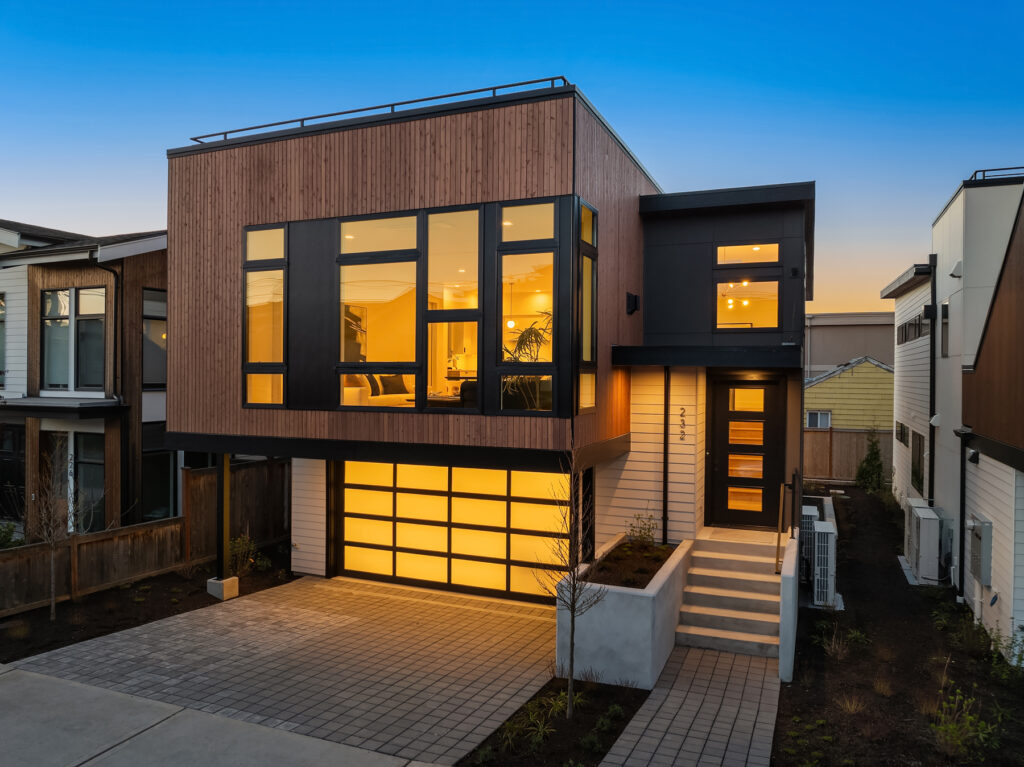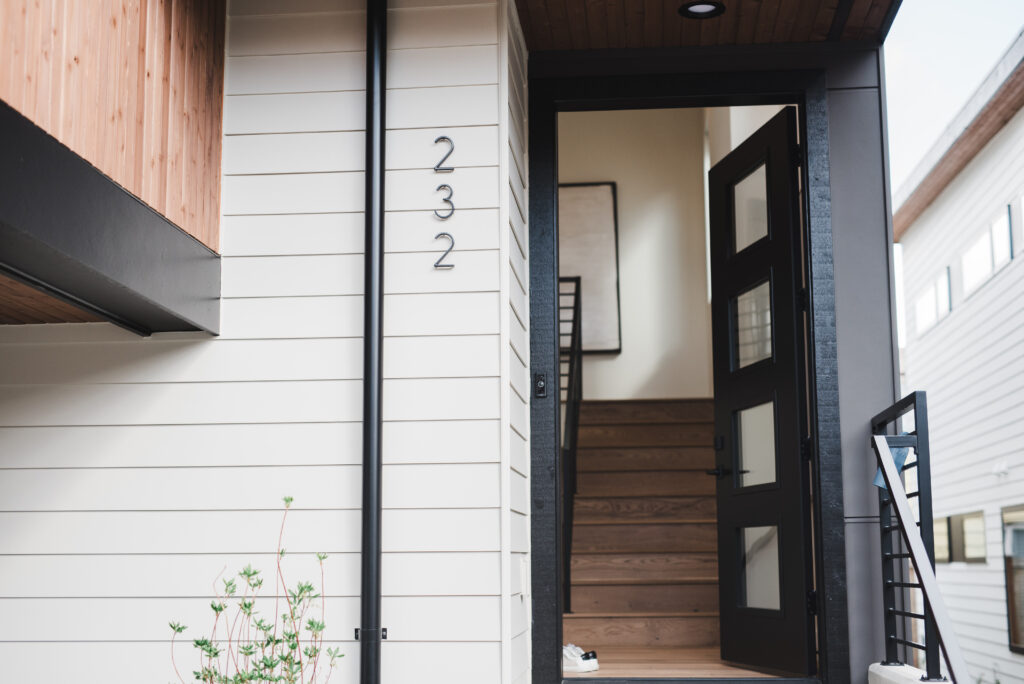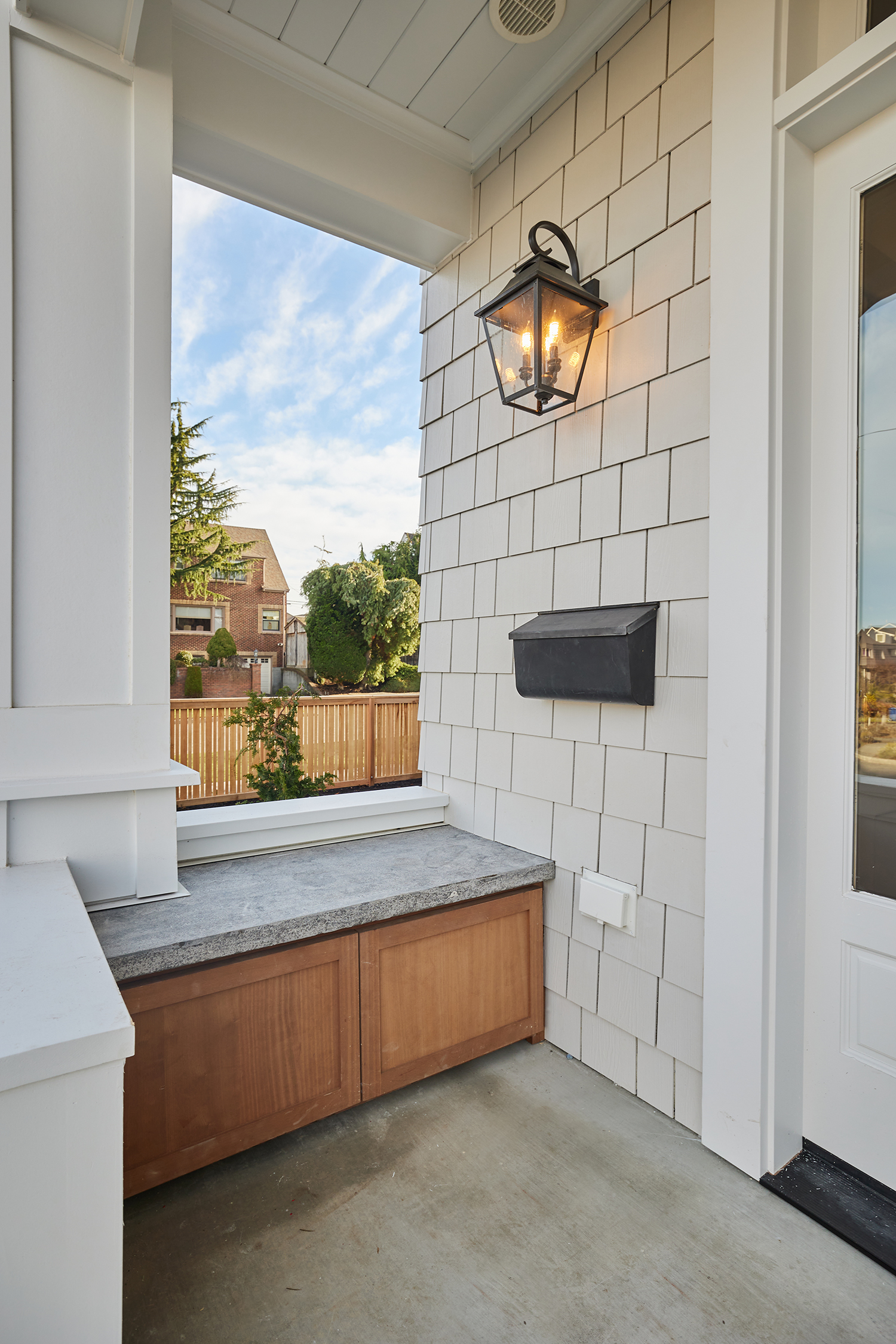Your home is your most valuable asset, and its appearance sets the tone for your entire property. Choosing the right siding is crucial not only for visual appeal but also for general maintenance and weather resistance. In this blog post, we’ll explore various house siding options, their types, maintenance needs, and their ability to withstand the elements. Whether you’re an existing homeowner or looking to build a new home in Seattle, this guide will help you make the best informed decision.

Why House Siding Matters
Your home’s exterior siding serves three key purposes. First, it protects your house from the elements. Second, it enhances overall curb appeal. Finally, it provides essential insulation, which regulates temperature, controls moisture levels, and reduces sound within your living spaces. The right siding material can significantly impact your home’s maintenance needs and energy efficiency. Therefore, it’s essential to understand the different types of exterior siding and their respective benefits and drawbacks.
In addition to protection, exterior siding contributes to your home as in investment. A well-chosen siding material can boost your overall property value and make it stand out in the neighborhood. More importantly, the proper siding ensures that your home remains resilient against varying weather conditions, which is particularly relevant for areas like Seattle.

Types of House Siding Options
Here are some excellent house siding options you can consider for your home.
Vinyl Siding
Vinyl siding is one of the most popular options due to its affordability and low maintenance. It comes in a wide range of colors and styles, making it easy to find a look that suits your home’s design.
- Cost-Effective: Vinyl is generally less expensive than other house siding options, making it an attractive option for budget-conscious homeowners.
- Minimal Upkeep: This type of siding doesn’t need much maintenance. A simple wash with soap and water once a year will keep it looking fresh.
- Energy Efficient: Vinyl siding can improve a home’s energy efficiency by providing an extra layer of insulation. This helps reduce heat loss in the winter and heat gain in the summer, leading to lower energy bills.
However, despite its advantages, vinyl siding does have some drawbacks. It may fade over time, and while it’s relatively durable, it can be susceptible to damage from high winds and impact.

Wood Siding
Wood siding offers a timeless, classic look that many homeowners find appealing. It can be customized with different stains and paints to match your aesthetic preferences.
- Rustic Beauty: Wood siding adds a natural, warm look to your home that is hard to replicate with other siding materials.
- Customizable: You can paint or stain wood siding any color you like, allowing for a greater range of customization.
- Insulation Properties: Wood provides excellent insulation, helping to keep your home warm in the winter and cool in the summer.
On the other hand, wood siding requires more maintenance than other types of siding. It needs to be painted or stained regularly to protect it from moisture and insects. Additionally, wood is more susceptible to fire and may not be the best choice in areas prone to wildfires.

Fiber Cement Siding
Fiber cement siding is a durable and versatile option that mimics the look of wood but requires less maintenance. It’s made from a combination of cement, sand, and cellulose fibers.
- Durability: Fiber cement is highly resistant to damage from insects, rot, and extreme weather conditions.
- Low Maintenance: Unlike wood, fiber cement does not need to be painted or stained as frequently.
- Fire Resistance: This house siding option is non-combustible, making it a safer option for homes in fire-prone areas.
A disadvantage of fiber cement siding is that it’s heavier than vinyl siding, which may require additional structural support during installation. As a result, this can add additional complexity and cost to the installation process.
Brick Siding
Brick siding provides a classic, elegant look that has stood the test of time. It’s known for its high durability and sustainability.
- Longevity: Brick siding can last for decades, even centuries, with little upkeep.
- Sound Insulation: Brick siding has excellent soundproofing properties, helping to reduce noise from outside sources.
- Resale Value: Homes with brick siding often have higher resale value due to their durability, low maintenance requirements, and aesthetic appeal.
The primary drawback of brick siding is its overall price point. It is one of the most expensive siding options, both in terms of material and installation. However, its durability and low maintenance needs can offset the initial investment over time.
Stucco Siding
Stucco siding is commonly used in Mediterranean and Spanish-style homes. It’s made from a mixture of cement, sand, and lime, and is applied in several layers.
- Artistic Beauty: Stucco provides a distinctive, textured look that can be customized with various colors and finishes.
- Formidable Strength: When properly maintained, stucco can last for decades.
- Fire Resistance: Stucco siding is another non-combustible material, providing a fire-resistant barrier for the exterior of a home.
Stucco siding can develop hairline cracks over time due to settlement, temperature fluctuations, or structural movement. Therefore, it requires regular maintenance to prevent said cracking and moisture intrusion
Maintaining Your House Siding
Proper maintenance is essential to prolonging the life of your exterior siding and keep it looking its best. Each different type of siding has specific maintenance requirements:
- Vinyl Siding: Wash annually with soap and water. Inspect for cracks or damage and repair as needed.
- Wood Siding: Repaint or restain every few years. Check for signs of rot or insect damage and address immediately if found.
- Fiber Cement Siding: Inspect for cracks and repair promptly. Repaint every 10-15 years.
- Brick Siding: Clean with a pressure washer as needed. Inspect for mortar damage and repair promptly.
- Stucco Siding: Inspect for cracks and seal them to prevent moisture intrusion immediately. Repaint every 5-7 years to maintain appearance.
Simply put, make sure you maintain regular upkeep to guarantee your siding continues to safeguard your home against the elements for years to come.

Weather Resistance of Siding Materials
- Vinyl Siding: Vinyl siding is generally weather-resistant but can crack in extremely cold temperatures. It can also warp or melt if exposed to high heat, such as from a grill placed too close to the house.
- Wood Siding: Wood siding provides good insulation but requires regular maintenance to protect it from moisture and insects. It can also be susceptible to fire, so it’s essential to take precautions if you live in a fire-prone area.
- Fiber Cement Siding: Fiber cement siding is highly resistant to damage from insects, rot, and extreme weather conditions. It’s also non-combustible, making it a safer option for homes.
- Brick Siding: Brick siding performs exceptionally well in all weather conditions, including extreme heat and cold. Its natural insulating properties can help reduce your energy bills.
- Stucco Siding: Stucco siding excels in warm, dry climates but may not be optimal for regions experiencing heavy rainfall or high humidity. Consistent maintenance is crucial to uphold its durability and prevent deterioration.
Choose Us for Your House Siding Options
At Alair Homes | Kirkland, we understand the importance of installing the perfect exterior siding for your home. Our experienced team is here to help you make an informed decision based on your specific home requirements. We take pride in using only the finest materials and providing you with high-quality craftsmanship.
Our custom luxury home building and renovation services in Kirkland are designed to meet the unique needs of each client. Whether you’re building a new home or renovating an existing one, we work closely with you to ensure you have the best house siding options.

Ultimately, choosing the right exterior siding is crucial for protecting your Seattle home, enhancing its appearance, and ensuring its longevity. By understanding the different types of house siding options and their maintenance requirements, you can make an informed decision that meets your needs, budget and preferences.
By following this comprehensive guide, you can transform your home’s exterior and enjoy the benefits of a well-protected, beautiful property. Visit us at Alair Homes in Kirkland for more information or to schedule a consultation.
